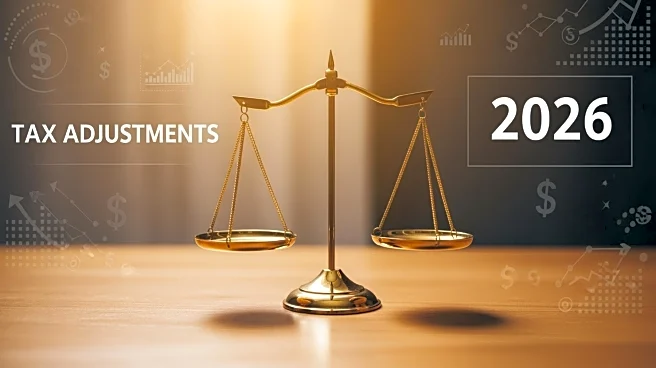What's Happening?
Americans are expected to receive larger tax refunds or face smaller tax bills in 2026 due to President Trump's tax and spending package passed in July. The IRS has not yet updated its withholding tables
to reflect new provisions retroactive to the start of 2025, potentially resulting in an additional $50 billion in taxpayer savings. According to Oxford lead economist Nancy Vanden Houten, the benefits of these retroactive tax cuts disproportionately favor high-income households. The tax package temporarily raises the cap on the state and local tax (SALT) deduction to $40,000 for certain households that itemize their taxes, and allows some business owners to bypass the SALT deduction cap entirely through state loopholes.
Why It's Important?
The anticipated increase in tax refunds could provide a significant economic boost, particularly in the first half of 2026. However, the benefits are expected to skew towards wealthier Americans, who typically have higher state and local tax bills. While larger refunds may encourage consumer spending, Vanden Houten cautions that the impact might be modest, as there is little evidence that current consumer spending is negatively affected by the delay in tax adjustments. The tax savings could lead to increased spending among top-income households, although they are likely to spend a smaller portion of their savings compared to lower-income groups.
What's Next?
As taxpayers prepare for the 2026 filing season, they may choose to adjust their withholdings to benefit from the retroactive provisions. Employers are expected to update employee withholdings once the IRS revises its tables to account for the new tax law changes. The broader economic impact will depend on how taxpayers utilize their increased refunds or reduced tax liabilities, with potential implications for consumer spending patterns and overall economic growth.
Beyond the Headlines
The tax law changes highlight ongoing debates about tax policy and economic inequality, as the benefits of tax cuts often favor higher-income individuals. The temporary adjustments to the SALT deduction cap may also influence state-level tax policies and business strategies, as entities seek to maximize their tax advantages. The long-term effects on fiscal policy and economic distribution remain to be seen.












